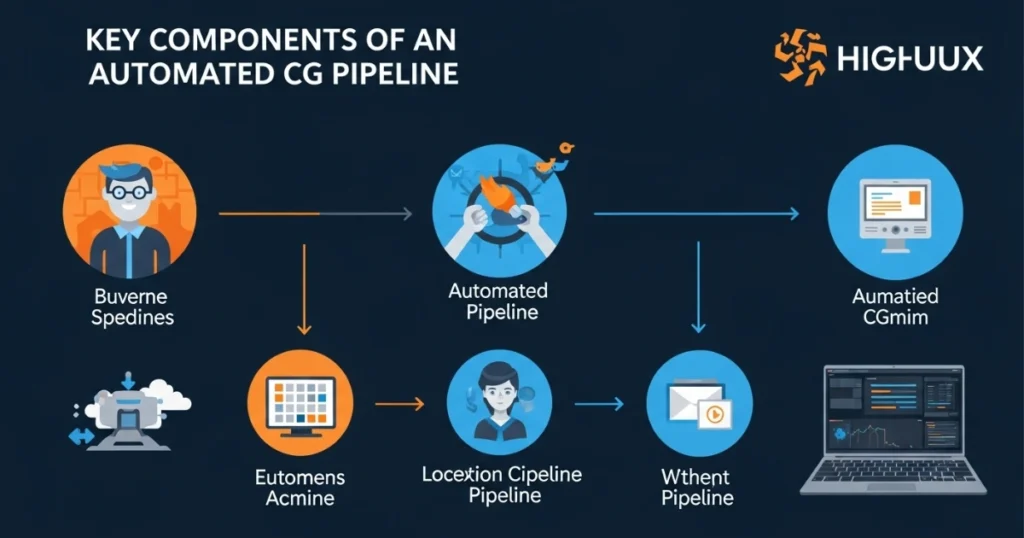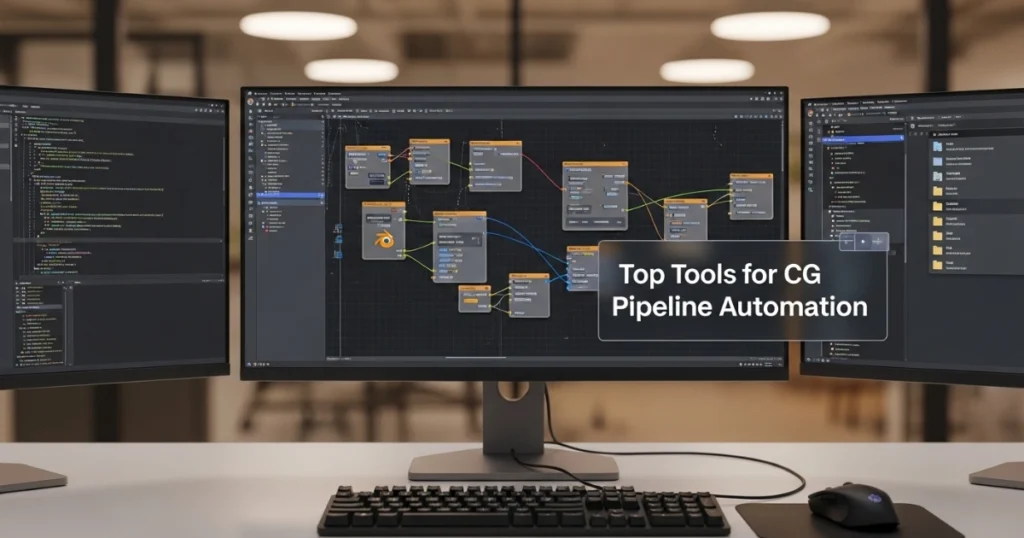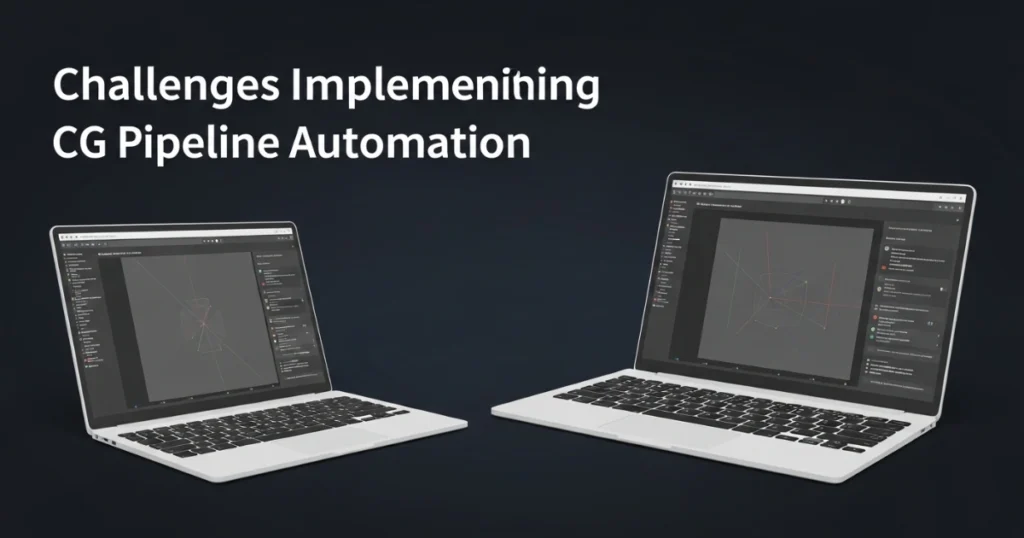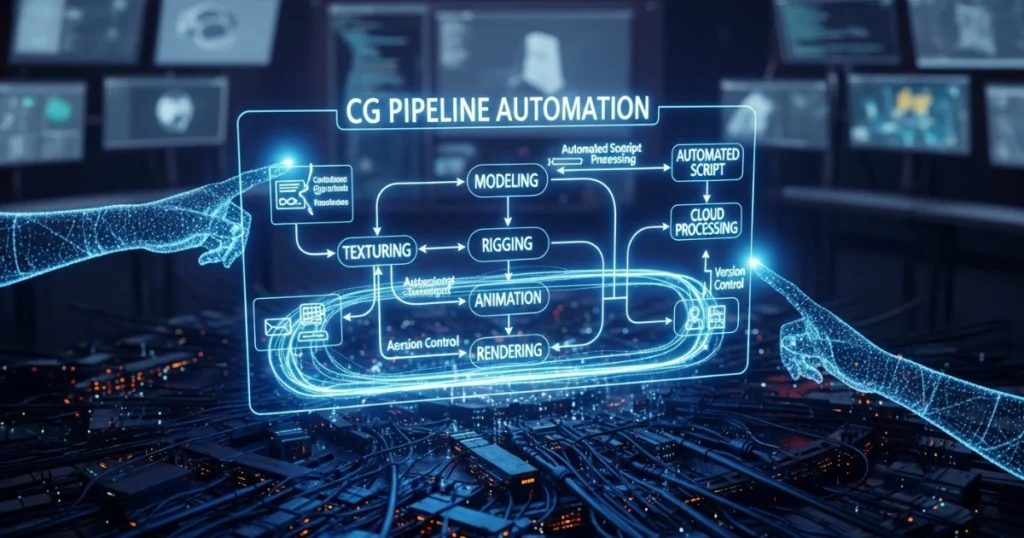
AI Commercials
CG Pipeline Automation: Boost Efficiency in 2025

Contents
- 1 What is CG Pipeline Automation?
- 2 Why CG Pipeline Automation Matters
- 3 Key Components of an Automated CG Pipeline
- 4 Top Tools for CG Pipeline Automation
- 5 Benefits of CG Pipeline Automation
- 6 Challenges of Implementing CG Pipeline Automation
- 7 How to Implement CG Pipeline Automation
- 8 Case Studies: CG Pipeline Automation in Action
- 9 Future Trends in CG Pipeline Automation
- 10 Best Practices for Maximum Efficiency
CG pipeline automation is revolutionizing the way animation and visual effects (VFX) studios operate, enabling teams to deliver high-quality projects faster and more efficiently. In today’s fast-paced digital world, where deadlines are tight and client expectations are sky-high, automating repetitive tasks in the CG pipeline is no longer optional—it’s essential. By leveraging cutting-edge tools and technologies, studios can streamline workflows, reduce human error, and maximize productivity. This article explores the intricacies of CG pipeline automation, its benefits, tools, and strategies to achieve maximum efficiency in 2025 and beyond.
What is CG Pipeline Automation?
A CG pipeline refers to the sequence of processes involved in creating computer-generated imagery, from concept to final render. These processes include modeling, texturing, rigging, animation, lighting, rendering, and compositing. CG pipeline automation involves using software, scripts, and tools to automate repetitive or time-consuming tasks within this workflow. For instance, automating file naming conventions or batch rendering can save countless hours. By integrating automation, studios can focus on creative tasks while minimizing manual labor.
Automation in the CG pipeline is not about replacing artists but empowering them. It allows teams to handle complex projects with tighter schedules and larger datasets. Consequently, studios adopting automation gain a competitive edge by delivering projects faster without sacrificing quality.
Why CG Pipeline Automation Matters
The demand for high-quality CG content is growing across industries like film, gaming, advertising, and virtual reality. However, manual processes can bottleneck production, leading to missed deadlines and increased costs. Here are key reasons why CG pipeline automation is critical:
- Time Savings: Automating repetitive tasks like file conversions or render queue management drastically reduces production time.
- Error Reduction: Manual processes are prone to human error, such as incorrect file formats or mislabeled assets. Automation ensures consistency.
- Scalability: Automated pipelines can handle larger projects and bigger teams without proportional increases in time or resources.
- Cost Efficiency: By reducing manual labor, studios save on labor costs and can allocate budgets to creative aspects.
- Improved Collaboration: Automation standardizes workflows, making it easier for global teams to collaborate seamlessly.
In short, CG pipeline automation enables studios to work smarter, not harder, achieving maximum efficiency in an increasingly competitive industry.
Key Components of an Automated CG Pipeline
To implement CG pipeline automation effectively, it’s crucial to understand its core components. Each stage of the pipeline can benefit from automation, and the right tools can make all the difference. Below are the primary areas where automation can be applied:

1. Asset Management
Asset management involves organizing 3D models, textures, and other digital assets. Manual asset tracking can lead to lost files or version conflicts. Tools like ShotGrid or ftrack automate asset tracking, versioning, and metadata tagging. For example, ShotGrid integrates with creative software like Maya and Nuke, ensuring assets are easily accessible and up-to-date.
2. File and Data Management
Consistent file naming and folder structures are vital for large teams. Automation scripts can enforce naming conventions and organize files into predefined directories. Tools like Deadline or OpenCue manage render jobs, ensuring files are processed in the correct order.
3. Rendering Automation
Rendering is one of the most time-intensive stages in CG production. Batch rendering tools like Thinkbox Deadline automate the rendering process across multiple machines, optimizing resource usage. Additionally, cloud rendering services like AWS Thinkbox or Google Cloud can scale rendering power dynamically.
4. Pipeline Integration
A fully automated CG pipeline integrates all stages seamlessly. Middleware like Open RV or Tactic ensures smooth data flow between departments. For instance, an automated pipeline can trigger texture updates in Maya once a texture artist uploads a new file.
5. Quality Control
Automated quality control checks can flag issues like missing textures or incorrect rigging before they disrupt production. Tools like ZBrush or Houdini’s scripting capabilities can run diagnostic checks, ensuring assets meet studio standards.
By automating these components, studios can create a cohesive pipeline that operates with maximum efficiency, reducing delays and improving output quality.
Top Tools for CG Pipeline Automation
Several tools have emerged as industry standards for CG pipeline automation. These tools cater to different pipeline stages and integrate with popular CG software. Here’s a look at some of the best options:

- Autodesk ShotGrid: A project management tool that automates asset tracking, task scheduling, and review processes. It integrates with Maya, 3ds Max, and Nuke for seamless collaboration.
- Thinkbox Deadline: A render management system that automates rendering across local and cloud-based render farms. It supports tools like Blender, Cinema 4D, and Unreal Engine.
- ftrack: A cloud-based platform for managing CG workflows, offering automation for task assignments, reviews, and approvals.
- OpenCue: An open-source render management system developed by Sony Pictures Imageworks, ideal for studios seeking customizable solutions.
- Python and PyMEL: Python scripting, especially with PyMEL for Maya, allows studios to create custom automation scripts tailored to their pipeline.
- Houdini’s Procedural Workflows: Houdini’s node-based system enables automation of complex tasks like simulations and rigging.
These tools, when used strategically, can transform a clunky pipeline into a streamlined, efficient system.
Benefits of CG Pipeline Automation
Implementing CG pipeline automation offers numerous advantages that directly impact a studio’s bottom line and creative output. Here’s a deeper dive into the benefits:

1. Faster Turnaround Times
Automation eliminates repetitive manual tasks, allowing teams to focus on creative work. For example, automating render queue management can cut rendering time by up to 50%. As a result, studios can meet tight deadlines without compromising quality.
2. Enhanced Collaboration
Global teams often face challenges with file sharing and version control. Automated pipelines ensure everyone works with the latest assets, reducing miscommunication. Tools like ShotGrid provide real-time updates, keeping teams in sync.
3. Reduced Costs
By minimizing manual labor, studios save on labor costs. Additionally, automation reduces the need for rework due to errors, further cutting expenses. For instance, automated quality checks can catch issues early, saving hours of troubleshooting.
4. Scalability for Large Projects
As projects grow in complexity, manual pipelines struggle to keep up. Automated systems scale effortlessly, handling thousands of assets and renders without slowing down. This is particularly crucial for AAA games or feature films.
5. Consistency and Quality
Automation enforces standardized workflows, ensuring consistent output across teams. This is vital for maintaining brand quality in franchises or serialized content.
By embracing CG pipeline automation, studios can achieve these benefits while staying competitive in a demanding industry.
Challenges of Implementing CG Pipeline Automation
While the benefits are clear, implementing CG pipeline automation comes with challenges. Understanding these hurdles can help studios plan effectively:

- High Initial Costs: Setting up an automated pipeline requires investment in software, hardware, and training. Small studios may find this daunting.
- Learning Curve: Artists and technicians need to learn new tools and scripting languages like Python. This can slow down adoption initially.
- Customization Needs: Every studio’s pipeline is unique, requiring custom automation solutions. Developing these can be time-consuming.
- Resistance to Change: Some team members may resist automation, fearing it will replace their roles. Clear communication is essential to address these concerns.
- Maintenance: Automated systems require regular updates to stay compatible with new software versions or project requirements.
Despite these challenges, the long-term benefits of CG pipeline automation far outweigh the initial hurdles. With proper planning, studios can overcome these obstacles and achieve maximum efficiency.
How to Implement CG Pipeline Automation
Implementing CG pipeline automation requires a strategic approach. Here’s a step-by-step guide to get started:

Step 1: Assess Your Current Pipeline
Evaluate your existing workflow to identify bottlenecks and repetitive tasks. For example, are artists spending hours on file conversions? Use this analysis to prioritize automation areas.
Step 2: Choose the Right Tools
Select tools that align with your pipeline’s needs and software stack. For instance, if your team uses Maya, ShotGrid and PyMEL are excellent choices. Ensure the tools integrate seamlessly with your existing software.
Step 3: Develop Custom Scripts
For unique pipeline needs, develop custom automation scripts using Python or MEL. These scripts can automate tasks like file renaming, batch processing, or quality checks.
Step 4: Train Your Team
Invest in training to ensure your team is comfortable with new tools and workflows. Online courses or in-house workshops can accelerate adoption.
Step 5: Test and Iterate
Start with a small project to test your automated pipeline. Gather feedback from your team and refine the system before scaling it to larger projects.
Step 6: Monitor and Maintain
Regularly update your automation tools to ensure compatibility with new software versions. Monitor performance to identify areas for further optimization.
By following these steps, studios can build an automated CG pipeline that delivers maximum efficiency and scalability.
Case Studies: CG Pipeline Automation in Action
Real-world examples highlight the transformative power of CG pipeline automation. Here are two case studies:
Case Study 1: A Mid-Sized Animation Studio
A mid-sized studio producing animated shorts struggled with manual asset management. By implementing ShotGrid and custom Python scripts, they automated asset tracking and version control. As a result, production time dropped by 30%, and the team could take on more projects without hiring additional staff.
Case Study 2: A VFX Studio for Feature Films
A VFX studio working on a blockbuster film used Thinkbox Deadline to automate rendering across a cloud-based render farm. This reduced rendering time by 40% and allowed the team to meet tight deadlines without compromising visual quality.
These case studies demonstrate how CG pipeline automation can drive efficiency and scalability across different project types.
Future Trends in CG Pipeline Automation
The CG industry is evolving rapidly, and automation is at the forefront of this transformation. Here are some trends to watch in 2025 and beyond:

- AI-Driven Automation: Artificial intelligence is being integrated into CG pipelines to automate tasks like texture generation and animation rigging. Tools like NVIDIA’s Omniverse are leading the way.
- Cloud-Based Pipelines: Cloud platforms like AWS and Google Cloud enable scalable, remote pipelines, making automation accessible to smaller studios.
- Real-Time Collaboration: Tools like Unreal Engine’s Multi-User Editing feature allow global teams to work simultaneously, with automation handling data syncing.
- Open-Source Solutions: Open-source tools like OpenCue are gaining traction, offering cost-effective automation for studios of all sizes.
- Virtual Production: Automation is streamlining virtual production workflows, enabling real-time rendering and on-set adjustments.
By staying ahead of these trends, studios can future-proof their pipelines and maintain a competitive edge.
Best Practices for Maximum Efficiency
To achieve maximum efficiency with CG pipeline automation, follow these best practices:
- Start Small: Begin with one or two automated tasks, such as render management, before scaling up.
- Document Workflows: Maintain clear documentation for automated processes to ensure team alignment.
- Leverage Open-Source Tools: Use cost-effective tools like Blender or OpenCue to reduce expenses.
- Regularly Update Tools: Keep software and scripts up-to-date to avoid compatibility issues.
- Involve the Team: Encourage artist input during automation development to ensure the pipeline meets their needs.
By adhering to these practices, studios can maximize the benefits of CG pipeline automation while minimizing disruptions.
Conclusion
CG pipeline automation is a game-changer for animation and VFX studios, enabling them to deliver high-quality projects with maximum efficiency. By automating repetitive tasks, studios can save time, reduce errors, and scale operations to meet growing demands. Tools like ShotGrid, Deadline, and Python scripting empower teams to streamline workflows and focus on creativity. While challenges like high initial costs and learning curves exist, the long-term benefits make automation a worthwhile investment. As the industry evolves, embracing CG pipeline automation will be key to staying competitive in 2025 and beyond. Start small, choose the right tools, and watch your pipeline transform into a powerhouse of productivity.


Creator Archetypes: Find Your Creative Style
Updated on August 24, 2025
Read More